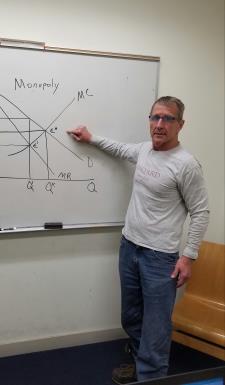
Consequences of a positive uncovered interest rate parity (UIP) spread for an emerging market economy?
1 Expert Answer

Lenny D. answered • 05/30/19
Global Macroeconomic Expert
You are thinking way too much and are getting caught up in all kinds of minutea. I spent a bit of time teaching this stuff at Tufts. Then I went to Wall Street and actually got to play in these markets for way too many years. Throwing around billions of dollars a day can get you to gray prematurely. Tests of UIP have failed miserably because those doing the testing have never sat on a trading desk. Suppose US 1 year paper is 2.5 percent and UK paper is 1.5% UIP would have us think that the pound will depreciate by 1% over the next year. Where is volatility in this equation? Suppose stg trades in a range of about 3/4th% a day or 12% per year. So the British investor who has located funds in the US at 2.5% can figure his returns will be 2% + or - 12% 68% of the time with a 32% change of more extreme deviations. So What do you want, 1.5% or a crap shoot. The fact is, Interest rate differentials are so much less volatile than currency movements that the statistical hypothesis testing is ludicrous. You really have to understand the Sandbox you are playing in.
I will lay ourt a simple framework I want you to think about.
Define PPP exchnge rate E* as
E*=P/P* Where E is the Home currency price of FX P* is the foreign Price level and P is the domestic Price level..Define a risk Factor RF= EXP(-k) In a long run equilibrium, PPP will hold up to a risk premium . Now define the exchange rate at any point in time as
E=(P/P*)*EXP(-k)EXP(u) where u is some random noise which has zero mean taking logs we have
ln(E)=e = p-p* -k +u note, E(et+k) = E(pt+k)-E(p*t+k) -E(kt+k)
E( e') = E(p') -E(p*') - E(k'). (1)
as we are using logs, as such. the expected appreciation or depreciation will be explained by Changes in the expected inflation differential and change in the risk premium, k,
Now note that nominal interest rates i= r + Inflation risk premium the risk premium is a function of expected inflation and the variance (and possibly higher moments) of inflation
So in each country, Expected inflation = i - r - Inf Variance Premium If we substitute this in to equation 1 we see
E(e') = i - i* - (r-r*) -E(p')+E(p*') -(dom inf var prem - Foreign inf Var premium) - E (k') (2)
Looking to explain changes on simple Changes in interest rate differential is fool hardy. Nominal interest rate differentials can change because Real interest rate have changed. If the real interest rate differential changes such that the foreign real rate is higher than the domestic real rate we would expect the currency to appreciate. If the nominal interest rate is higher because expected inflation is higher or the variance of inflation is higher it will have just the opposite effect.
Due note that risk premium, k is probably corrected with real interest rates. The degree of correlation depends upon the degree of capital mobility.
The point is, Look at equation 2. When you are expecting all oft he events in the world being forecasted by interest rate differentials you are waliking a fraying tightrope.
I would welcome the opportunity to help guide you through this quagmire. A few years at Harvard and MIT got me thinking in this direction. Living in these markets and still breathing after 30 years is another whole story
Still looking for help? Get the right answer, fast.
Get a free answer to a quick problem.
Most questions answered within 4 hours.
OR
Choose an expert and meet online. No packages or subscriptions, pay only for the time you need.





Lenny D.
By the way, the risk premium for and emerging market, k is going to be large05/30/19